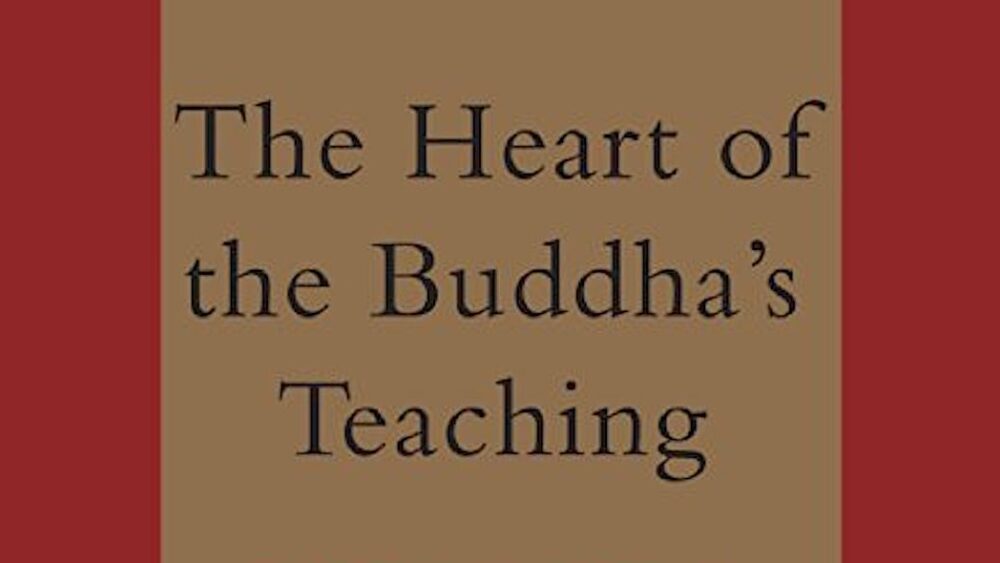Thich Nhat Hanh’s “The Heart of the Buddha’s Teachings” is a powerful and insightful book that introduces readers to the core teachings of Buddhism, mindfulness, and meditation. This book is an essential read for anyone interested in Buddhism or looking to deepen their understanding of the practice. In this book review, I will discuss how Thich Nhat Hanh expertly distills the essence of Buddhism and presents it in a clear and accessible way.
One of the most compelling aspects of “The Heart of the Buddha’s Teachings” is the way in which Thich Nhat Hanh weaves together the fundamental concepts of Buddhism into a coherent and understandable whole. From the Four Noble Truths to the Noble Eightfold Path, Thich Nhat Hanh provides a comprehensive overview of the core teachings of Buddhism. However, he does not stop there. He also introduces readers to the concepts of interdependence, impermanence, and non-self, which are essential to understanding the Buddhist worldview.
Thich Nhat Hanh’s writing style is clear and concise, making complex ideas easy to understand. He uses simple language and real-world examples to illustrate the concepts he is discussing. For example, he explains the concept of interdependence by using the example of a flower. He writes, “A flower is made only of non-flower elements, such as chlorophyll, sunlight, and water. If we were to remove any of these non-flower elements, there would be no flower.” This example makes it easy to understand how everything in the world is interconnected and interdependent.
Another aspect of “The Heart of the Buddha’s Teachings” that I appreciated was Thich Nhat Hanh’s emphasis on mindfulness. He explains that mindfulness is at the core of Buddhist practice and is essential for living a happy and fulfilling life. Thich Nhat Hanh describes mindfulness as the practice of being fully present in the moment and aware of one’s thoughts and feelings. He provides practical exercises and meditations that readers can use to develop their mindfulness practice.
Thich Nhat Hanh also emphasizes the importance of meditation in Buddhist practice. He explains that meditation is a tool for developing mindfulness and for cultivating inner peace and happiness. He provides guidance on how to meditate, including tips on posture, breathing, and focusing the mind. Thich Nhat Hanh also discusses the different types of meditation, such as walking meditation and loving-kindness meditation, and how each can be used to develop different aspects of mindfulness.
Throughout the book, Thich Nhat Hanh uses stories and anecdotes to illustrate the concepts he is discussing. These stories are both engaging and enlightening, providing insights into Buddhist philosophy and practice. For example, he tells the story of a monk who was asked by his teacher to describe the sound of one hand clapping. The monk’s response was to clap with one hand, demonstrating that the sound of one hand clapping is the sound of emptiness. This story illustrates the concept of non-self and how everything is interconnected and interdependent.
One of the most powerful sections of the book is the chapter on the Noble Eightfold Path. Thich Nhat Hanh explains that the Noble Eightfold Path is the path to liberation from suffering and the attainment of enlightenment. He breaks down each of the eight steps of the path and provides practical guidance on how to incorporate them into one’s life. He also emphasizes that the path is not a linear progression, but rather a set of interdependent practices that should be developed together.
Thich Nhat Hanh’s “The Heart of the Buddha’s Teachings” is a profound and insightful book that introduces readers to the core teachings of Buddhism, mindfulness, and meditation. Thich Nhat Hanh expertly distills complex ideas into simple language and this is a must-read for anyone who wants to take their understanding of mindfulness to the next level.
Buy the Book



Comments are closed.